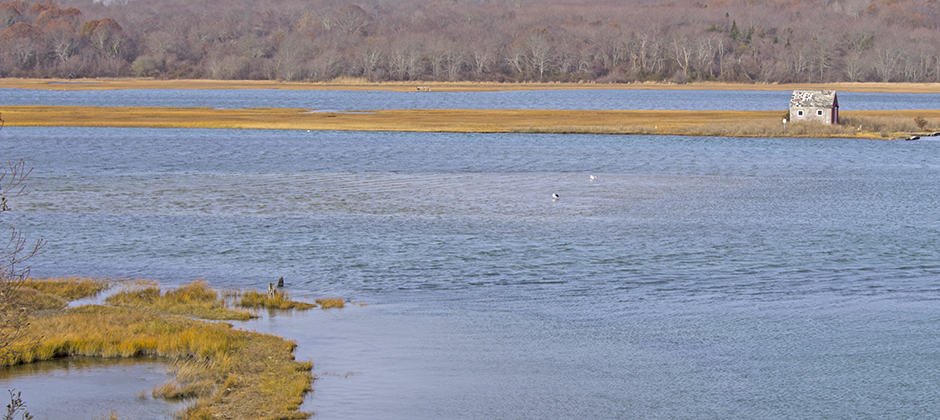Share this article
A RADical idea for managing the ecosystems of the future
As ecosystems face a gauntlet of pressures that are reshaping how they function in the future, managers are left trying to figure out how to respond. While actions often revolve around trying to reset the ecosystem back to how it once was, some researchers say it may be better to consider alternative choices as the changes take place.
In a paper published in Frontiers in Ecology and the Environment, researchers recommend looking at three strategies, what they call “RAD”—resisting, accepting or directing the trajectories of ecosystem change.
“Most management strategies use the past as their precedent,” said Abigail Lynch, a research fish biologist with the U.S. Geological Survey’s National Climate Adaptation Science Center. “Our go-to has been to restore or rehabilitate ecosystems to what they once were.”
For a long time that strategy has worked, Lynch said, but global changes have intensified and some of those changes are irreversible.
“So, what happens when the past doesn’t reflect the future?” she asked. “The RAD framework helps initiate constructive, but often uncomfortable, conservations about what comes next—when to consider accepting and directing change, in addition to just resisting it.”
In the paper, Lynch and her colleagues lay out the three approaches to address transforming ecosystems. The first involves resisting change—trying to hold on to the way that an ecosystem works, or how it once worked. That’s the approach many rehabilitation efforts take in trying to preserve the landscape or restore it to the way it once was.
The second approach is simply accepting what is happening to the ecosystem without intervening. Given the limited resources for natural resource management, Lynch said, it’s a common choice for managers.
The last approach is directing ecosystem transformation toward a specific alternative state based on how managers want it to function. This is most often the most controversial option because it changes the trajectory of the system.
There is no one right answer, Lynch said, and each has its tradeoffs in terms of management goals, societal values and available funding. “These options can all operate concurrently across a landscape, and the feasibility for each approach can shift over time, requiring managers to perpetually revisit choices,” she said.
In the paper, she and her colleagues point to how three different national wildlife refuges have responded to sea-level rise based on ecological and societal aspects as well as financial feasibility.
At Rhode Island’s John H. Chafee National Wildlife Refuge, managers are resisting the effects of sea level rise by depositing dredged sediment on waterlogged salt marshes and using recycled oyster shells to secure the sediment. At Chincoteague National Wildlife Refuge in Virginia, managers had tried to resist dune overwash for years. But now they’re using the acceptance strategy, allowing waves from storms to fill in waterfowl impoundments. They’re even moving visitor infrastructure as a result. In Blackwater National Wildlife Refuge in Maryland, managers are directing the effects of sea-level rise by adding additional private land to marsh that’s already migrating.
No matter what, Lynch said, managers will face tradeoffs and risks as ecosystems change. “We’re now starting to think about how to help managers use familiar techniques, such as adaptive management, in the unfamiliar territory of ecosystem transformation,” she said. “At the most fundamental level, stakeholders, managers and policy makers have to decide whether to resist, accept, or direct ecosystem change. Yes, there is surely an element of uncertainty there, but adaptive management can help bound that and better inform the risk taking.”
The Climate Change Working Group will host a symposium about the RAD framework during the upcoming TWS virtual conference this fall.
Header Image: At the John H. Chafee National Wildlife Refuge, managers are trying to resist the effects of sea level rise by building up waterlogged salt marshes. Credit: Gary Brownell








